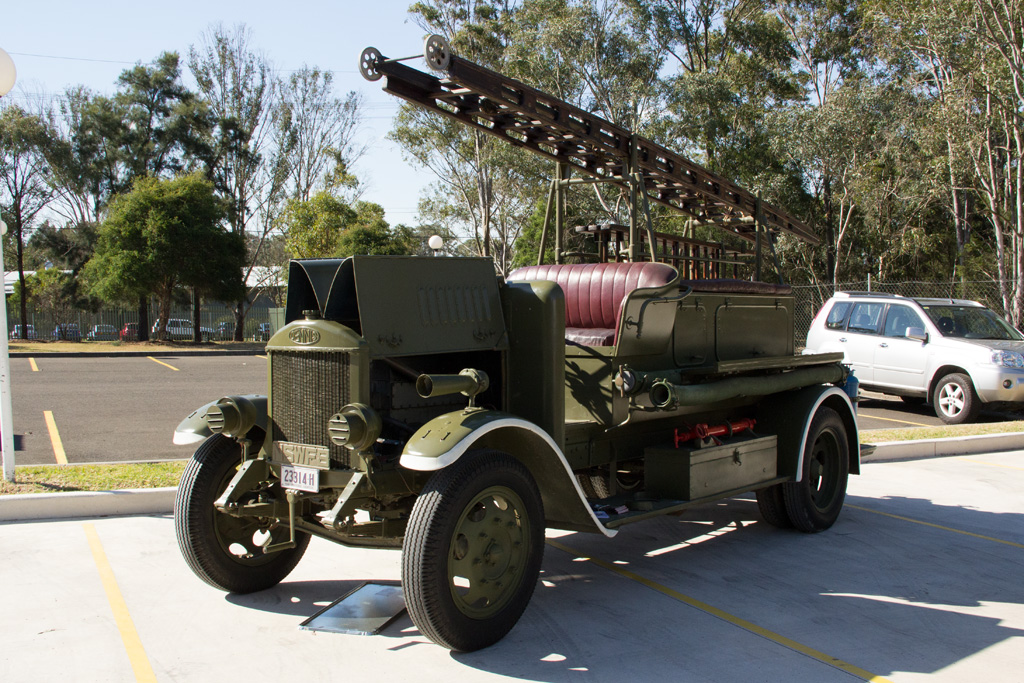When trying to date photographs, a handy tool is to identify any vehicles that may be present in the image.
Here’s a unique vehicle that was part of the military vehicles display at State Records Open Day last Friday.
Can you date this fire engine?
Thanks to the Museum of Fire for coming to our Open day and displaying part of their collection on the day!
Category: -- Can you date...?, General


Iain Stuart says:
Well the first thing you have to consider re fire engines is the chassis series in this case it is a Dennis chassis and then work on the type of body …etc and then note the earliest possible date and remember that fire engines in Australia stayed in service for a very long time unlike today when they seem to get turned over every 20 years.
enno says:
I can date this photograph ! I can tell you with a high level of certainty that this photograph was taken on 30 August 2013.
enno says:
If you look at this website
http://www.dennissociety.org.uk/preserved/fire/index.html
the most similar ones are the 1927 and 1929 ones. The later ones don’t have the front end of the springs protruding so far in the front, and they have larger engines.
Jennysoldcars says:
General vehicle dating:
• It has 1910s-1930s attributes and styling:
o Radiator is not under the bonnet/hood but separate and distinctive
o Mudguards separate to the bonnet/hood and body, not incorporated into the overall body shape
o Straight up and down firewall/scuttle without any windscreen
o Plain motor buggy style seat, a wrap around bench seat not incorporated into any cabin body structure.
• To narrow down the vehicle date:
o Probably not 1910s because:
the mudguards are more typically 1920s-30s curved, not earlier flattened style
the wheel size and rim type, these are light truck wheels and a tyre size more typical of 1930s onwards [see note 2 below] in fact 1910s trucks in original condition would likely have solid rubber tyres not pneumatics as shown.
o By the later 1920s and increasingly afterwards even service vehicles provided improved crew protection and comfort so we can say the body is likely before the mid 1930s.
So those clues put the vehicle itself in a probably date range of 1920s to early 1930s.
Note:
1.Were this to be a period photograph it could indicate a photo date during or after WW2 because of the military paint colour. Why WW2? –
• the olive drab (green) paint was not always a WW1 vehicle colour, but it was in WW2 and after;
• the ‘blackout lights’ – those louvres on the headlights are a WW2 fitting,
• the ‘blackout lines’ – white painted lines outlining the sides, front and back of a vehicle to make it a little easier for other traffic and pedestrians to see in blackout conditions, these are a WW2 characteristic after December 1941 in Sydney.
2.It is important to remember that older service vehicles like fire engines often had several incarnations, with modifications and modernisations such as updates in wheel and tyre sizes, addition of electrical systems e.g. for starting, newer engines, newer bodies or changed crew seating on old chassis and fitting of newer apparatus. Therefore for photo dating noting such modifications may also give useful clues.
Of course seeing the Dennis at the Open Day and knowing it came from the Museum of Fire gives an advantage especially as it’s on their website as a 1931 Denis 250/400 http://www.museumoffire.com.au/
An aside – I drove one of these vintage de-commissioned NSWFB Dennis fire engines for a parade in the 1970s. While I was and am well used to driving historic vehicles of all ages the Dennis rates as one of the tougher drives with very heavy steering and heavy clutch, and it was not much better when we got out on the open road but it was a lot of fun! Left me with a sense of admiration for the blokes who drove them when they were working engines.
Anna Gray says:
Thanks Jennyoldcars – a brilliant run down of all the clues to look for when dating old cars.